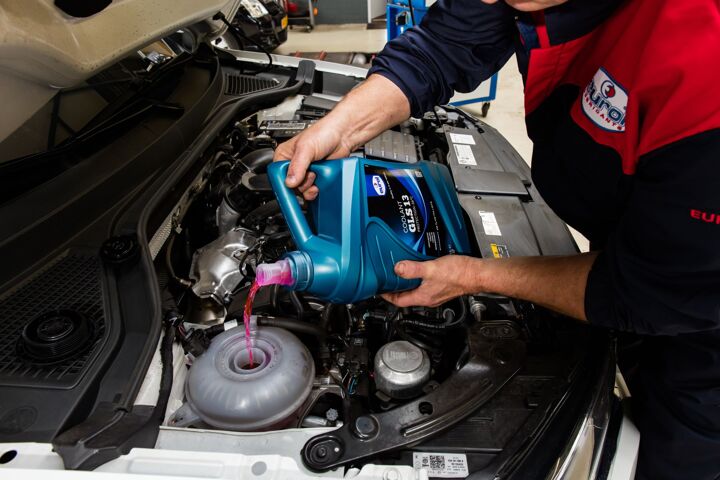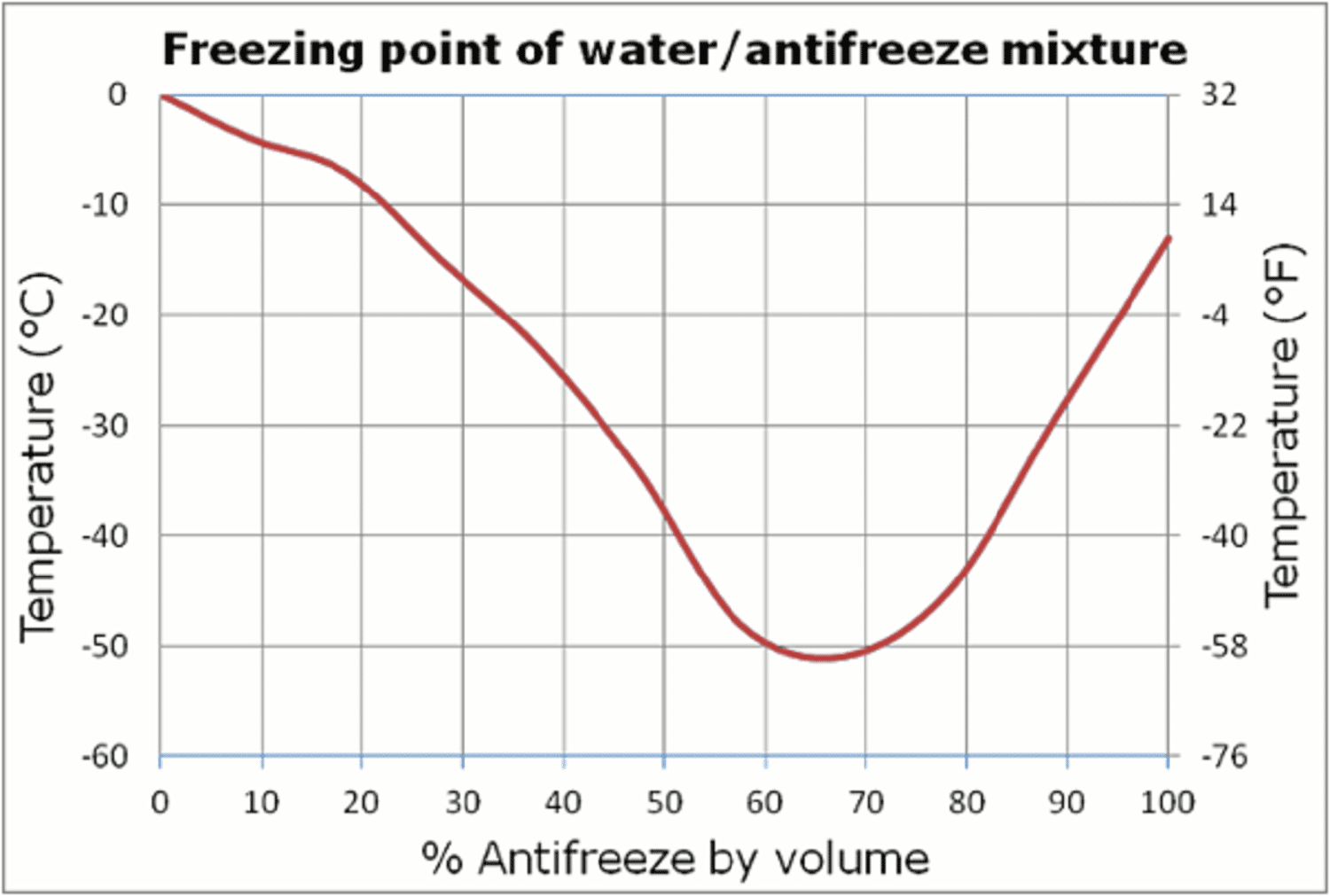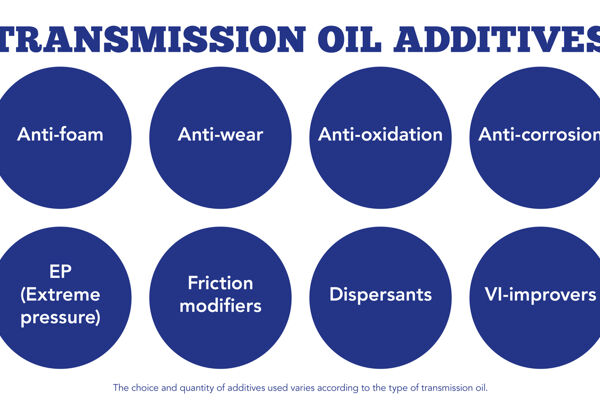
Eurol introduces the Coolant -36°C G12 EVO
We introduce the Eurol Coolant -36°C G12 EVO. This is a state-of-the-art coolant developed from LOBRID PSi-OAT technology, specifically for the latest generation vehicles o...
May 2, 2022

Let’s start with its basic function: a coolant, as the name suggests, must have a cooling effect. In an ideal situation, all the energy from burning fuel would be used for movement. However, most of the energy from the fuel is converted into heat. Even electric vehicles and hybrids with a large battery pack release a lot of heat during driving (discharging) and charging. These systems no longer function when they overheat and that’s why there is a cooling system in place.
In addition to removing heat, coolants have other functions such as:
The primary function of the fluid, as mentioned earlier, is to distribute the excess heat to the radiator where it is exchanged with the outside air. Water is eminently suitable for absorbing and removing heat, but the disadvantage of water is that it freezes at 0 degrees and boils at 100 degrees. The minerals and salts present in (drinking) water also have a negative effect on the materials in the cooling system.
To get around these negative effects of water, we use glycols as the base for a coolant; usually mono-ethylene glycol (MEG). Monopropylene glycol (MPG) is sometimes used as a base too, but its heat transfer capacity for combustion engines is usually insufficient. MPG is less toxic, therefore these fluids are more often seen in the food industry. The third option is glycerol-based coolants, also known as the G13 specification. While glycerol is more environmentally friendly compared to MEG, it is not as readily available for this application because it is also a raw material for cosmetics. Glycerol is a by-product of biofuel production or can derive from plant material.
An actual coolant consists of several parts, because – in addition to mono-ethylene glycol (MEG) – additives are required to give the fluid the desired properties (more on this later). We refer to MEG + additives as ‘antifreeze’ or ‘concentrate’. Antifreeze must be diluted with demineralised or softened water before it can actually be used in a cooling system.
From demineralised water, minerals such as calcium and salts removed. Limescale build up prevents heat transfer and salts can corrode the metals in the system.
Only after the antifreeze has been diluted we have a coolant ready for use, also called ‘Ready-Mix’ or ‘coolant’. The amount of demineralised water used to dilute the antifreeze determines the temperature range of the mixture. As a rule, a 50/50 mix provides protection to no lower than -36°C, a 40/60 mix ratio (40% concentrate and 60% demineralised water) gives protection to no lower than -26°C. Higher concentrations of antifreeze do not give a greater or 'better' temperature range. Additionally, too low of a concentration of antifreeze in turn loses its corrosion prevention properties. Please refer to the graph below:

To give the coolant the desired properties, chemical additives are needed. The additives are added to prevent the formation of corrosion, cavitation (formation and destruction of small air bubbles that can cause damage to the water pump), deposits and sludge (insoluble material sediment), amongst other things.
To prevent poisoning through ingestion of the coolant, a bittering agent is always added. This means that, in the event of an unexpected coolant leak, dogs leave the liquid alone. This also ensures that children do not drink the coolant. Both, humans and animals become very ill after ingestion.
We can give the coolant any colour by adding a dye to it. This means that these days people absolutely cannot 'trust in’ the colour of the fluid or what they were used to processing. In other words, you cannot tell quality by the colour of the coolant.
Furthermore, there are stabilisers against drop-outs (accumulation of silicate mineral deposits), dispersants to ensure tolerance of hard water, a pH-buffer to maintain the level of acidity, and anti-foaming additives to ensure that as little air as possible is trapped in the liquid during pumping.
IAT is also known as the ‘conventional’ or ‘old fashioned’ coolant. It is the one with the short change interval (every 2 years), often green or blue in colour.
To meet the requirements set previously, this coolant contains inorganic (mineral) inhibitors consisting of silicates, nitrates, amines, phosphates, and/or borates. This coolant works by creating a little protective ‘blanket’ so that the metal in the system is protected. The mineral inhibitors that provide this effect are used up during the process and this means that there is no more capacity for repairing the protective blanket after a certain amount of time. This makes the system somewhat more vulnerable.
The advantage of this coolant is that it works quickly, but at the same time the disadvantage is that the chemical effect wears off in a relatively short period of time. The created protective blanket also acts as an insulator and thus limits heat transfer to some extent.
An OAT coolant is glycol-based (MEG or MPG) with organic inhibitors, consisting of carboxylates. This contains 0% inorganic (mineral) inhibitors. Organic inhibitors are selective; instead of building up a protective blanket throughout the system as an IAT does, the inhibitors interact chemically only at the places in the system where corrosion damage is starting to occur.
Therefore, the consumption of additives is much lower compared with an IAT. For that reason, the change interval of an OAT is considerably longer (long-life).
The disadvantage is that the protection is always reactive, so there is always some delay in the protection because the surface must first start to corrode before the chemistry sets to work.
In many light metals, this small form of corrosion, as occurs with an OAT, is not desirable; for this reason, a hybrid coolant has been developed in which both mineral inhibitors from an IAT and organic inhibitors from an OAT are used. The foundation is an OAT with small amounts of silicate, borate, molybdate, or nitrate added depending on the application. This coolant combines the long-life effect (OAT) with the rapid protection (IAT) of the two variants discussed above.
Lobrids are the latest generation of coolants in which the hybrid effect of a HOAT is even better aligned with and fine-tuned for the application. The level of mineral inhibitors is reduced and more organic inhibitors have been used, hence the name combining both low and hybrid. The mineral inhibitors used are often included in the name, for example: Si-OAT and P-OAT (silicate or phosphate OAT) or a combination of the two: PSi-OAT.
Heat management in a battery electric vehicle (BEV) is very important, whether it concerns the temperature of the batteries, the engine or the high-powered electrical components for control. We distinguish two variants of this type of cooling:
Batteries lose capacity when they heat up too much. They also lose capacity when too cold. Batteries that are too cold will not charge either. The current dominant factor is still an externally cooled battery pack using conventional MEG-based coolants. Examples of such vehicles include: Tesla Model S, Audi eTron, Mercedes-Benz EQC, and BMW i3.
Fast charging technology is a focal point for vehicle developers. Fast charging potentially results in very high temperatures. Vehicles that achieve loading speeds of up to 960 km/h (converted) are already available on the market. Loading speeds of over 1400 km/h are already being promised within the near future. Such speeds can only be achieved by immersed battery packs, because they can manage temperature. The fluids used for this more closely resemble transformer fluids but with a much lower viscosity and are also called ‘thermal fluids’ or ‘dielectric fluids’.
Thermal fluids have different requirements than the coolant fluids for combustion engines discussed above, they have a high flash point, must be flame retardant and non-conductive.
Now that we have learned about the differences and the developments made over time, the question ‘why do we need so many different coolants?’ arises. In theory, of course, the most ideal solution would be to use the most protective long-life coolant for all cooling systems, but unfortunately, practice shows otherwise. There are many different OEMs (car brands) with different views on their engines and the materials used. The requirements OEMs set for an approved coolant are generally defined in a specification so that the required fluid complies with one of the above technologies. For this reason, always consult the Eurol Oil Advisor. This tool will help you make the right choice for the correct fluid or coolant for your application.
If you have any other questions, please contact us - our specialists will be happy to help.

We introduce the Eurol Coolant -36°C G12 EVO. This is a state-of-the-art coolant developed from LOBRID PSi-OAT technology, specifically for the latest generation vehicles o...

New coolant suitable for modern cars of various Japanese and Korean car brands. This coolant prevents formation of deposits, corrosion, foaming, sludge and leakage.

The new ‘Specialty E-line’ by Eurol guarantees durability, sustainability and efficiency. Eurol sees an enormous growth in the use of heavy duty electrical equipment as a s...

Fuel savings, smoother shifting, extended lifespan, and smaller sump capacities: these are the main driving forces for innovations in the field of transmission.

We introduce the Eurol Coolant -36°C G12 EVO. This is a state-of-the-art coolant developed from LOBRID PSi-OAT technology, specifically for the latest generation vehicles o...

New coolant suitable for modern cars of various Japanese and Korean car brands. This coolant prevents formation of deposits, corrosion, foaming, sludge and leakage.

The new ‘Specialty E-line’ by Eurol guarantees durability, sustainability and efficiency. Eurol sees an enormous growth in the use of heavy duty electrical equipment as a s...

Fuel savings, smoother shifting, extended lifespan, and smaller sump capacities: these are the main driving forces for innovations in the field of transmission.
